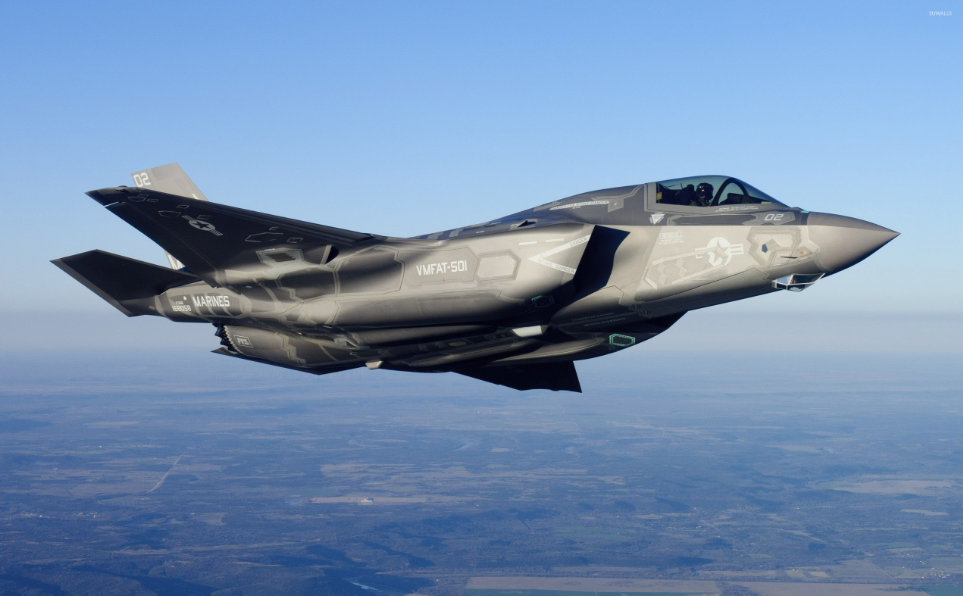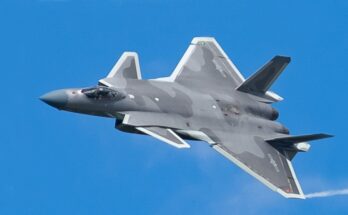
It’s a cornerstone of modern air power for the United States and its allies, designed to replace a variety of aging fighter inventories across multiple services.
Here’s a breakdown of its key aspects:
1. Fifth-Generation Capabilities:
- Stealth: The F-35’s design prioritizes low observability, with features like aligned edges, reduced engine signature, and internal weapons bays to minimize its radar and infrared footprint, allowing it to operate undetected in contested airspace.
- Sensor Fusion: A major strength of the F-35 is its ability to seamlessly integrate data from all its onboard sensors (like the AN/APG-81 AESA radar, Electro-Optical Distributed Aperture System (DAS), and Electro-Optical Targeting System (EOTS)). This creates a comprehensive, 360-degree real-time picture of the battlespace for the pilot, enhancing situational awareness and survivability.
- Network-Enabled Operations: The F-35 acts as a “quarterback of the skies,” sharing its integrated operational picture with other air, land, sea, space, and cyber assets, significantly enhancing the capabilities of the entire joint force. This enables network-centric warfare and improved coordination.
- Advanced Avionics and Electronic Warfare: It’s equipped with sophisticated electronic warfare systems that allow pilots to detect, track, and jam electromagnetic threats, as well as disrupt attacks. The pilot’s helmet is also incredibly advanced, projecting all necessary flight and targeting information onto the visor.
- Speed and Agility: The F-35 can reach speeds of Mach 1.6 (around 1,200 mph) even with a full internal weapons load. While not a “supercruising” aircraft, it offers excellent subsonic acceleration and can perform supersonic dashes.
2. Multi-role Design: The F-35 is a multi-role combat aircraft, meaning it’s capable of performing a wide range of missions, including:
- Air superiority (dominating the skies)
- Strike missions (attacking ground targets)
- Electronic warfare
- Intelligence, surveillance, and reconnaissance (ISR)
3. Variants: The F-35 family consists of three main variants, each tailored for specific operational requirements:
- F-35A (CTOL): Conventional Takeoff and Landing variant, primarily for the U.S. Air Force and its allies, replacing aircraft like the F-16 and A-10.
- F-35B (STOVL): Short Takeoff/Vertical Landing variant, designed for the U.S. Marine Corps, the UK, and Italy. This variant can operate from austere, short-field bases and a range of air-capable ships, including amphibious assault ships, due to its ability to land vertically and take off in very short distances.
- F-35C (CV): Carrier Variant, built for the U.S. Navy. It features a larger wing, reinforced landing gear, and a specialized tail hook for catapult-assisted takeoffs and arrested landings on aircraft carriers.
4. International Program and Production: The F-35 is a multinational program, with significant involvement from partner countries like the UK, Italy, Netherlands, Australia, Canada, Denmark, and Norway. Companies like Northrop Grumman and BAE Systems are major partners in the development, production, and sustainment of the aircraft.
5. Propulsion: All F-35 variants are powered by a single Pratt & Whitney F135 turbofan engine, which is considered one of the most powerful fighter engines in the world, providing significant thrust.
Despite facing some criticism regarding cost overruns and developmental delays during its early stages, the F-35 is widely regarded as the most advanced and connected fighter jet in the world, offering unparalleled capabilities for modern warfare.


